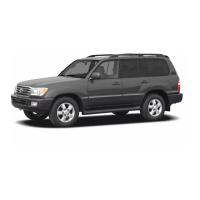
Do you have a question about the Toyota 2004 Land Cruiser and is the answer not in the manual?
| Brand | Toyota |
|---|---|
| Model | 2004 Land Cruiser |
| Category | Automobile |
| Language | English |
Explains the types of safety and vehicle damage warnings used in the manual.
Explains the meaning of the safety symbol used throughout the manual.
Details the function, operation, and hazards of occupant restraint systems like seat belts and airbags.
Provides a general overview of the vehicle's instruments and controls.
Identifies and describes the components of the vehicle's instrument panel.
Provides an overview and identification of the gauges and indicators in the instrument cluster.
Explains the meaning of various indicator lights and symbols found on the instrument panel.
Covers the operation and security features related to vehicle keys and doors.
Describes the types of keys supplied, their functions, and important precautions.
Explains the function of the engine immobilizer system as a theft prevention measure.
Details the procedures for locking and unlocking the side doors using the key or power switches.
Explains the operation of the power windows, including normal and automatic modes.
Covers the procedures for locking, unlocking, and opening the back door.
Provides instructions on how to open and secure the vehicle's hood.
Explains how to set and test the vehicle's theft deterrent system.
Details the function, operation, and hazards of occupant restraint systems like seat belts and airbags.
Explains how to properly adjust seats for safety and comfort.
Provides instructions on seat belt usage, fastening, and precautions.
Explains the function and safety precautions for the SRS driver and front passenger airbags.
Details the operation and safety precautions for side and curtain shield airbags.
Covers the importance and precautions for using child restraint systems.
Covers adjustments for the steering wheel and mirrors.
Explains how to adjust the tilt and telescopic position of the steering wheel.
Details how to adjust and use the outside rear view mirrors, including heating and folding.
Explains the operation of the auto-dimming inside rear view mirror and the compass.
Describes the use and function of the sun visors and vanity mirrors.
Covers the operation of all exterior and interior lights, wipers, washers, and defoggers.
Explains the operation of headlights, high/low beams, turn signals, and flashing functions.
Details how to activate and use the emergency hazard lights.
Explains how to adjust the brightness of the instrument panel lights.
Describes how to operate the front fog lights.
Explains the operation of interior lights, including the illuminated entry system.
Details the operation of the windshield wipers and washer system.
Explains the operation of the rear window wiper and washer.
Describes how to operate the rear window defogger.
Explains how to use the outside rear view mirror defogger feature.
Provides an overview of the vehicle's gauges, meters, and warning indicators.
Explains how to read the fuel gauge and the low fuel level warning light.
Details how to read the engine coolant temperature gauge and what to do if overheating occurs.
Explains how to read the engine oil pressure gauge and the implications of low pressure.
Describes how to read and reset the odometer and trip meters.
Explains the meaning of various service indicators and warning buzzers.
Covers the operation of the ignition switch, transmission selector, and parking brake.
Explains the different positions of the ignition switch and the steering lock mechanism.
Details the operation of the automatic transmission, including selector lever positions and driving modes.
Explains the operation and use of the four-wheel drive system and its controls.
Covers the operation, setting, and cancellation of the cruise control system.
Explains the function and operation of the active traction control system.
Details the integrated control provided by the vehicle stability control system.
Provides an overview of the vehicle's car audio system.
Covers basic operation, turning the system on/off, and switching between functions.
Offers tips for proper audio system operation, including radio reception.
Explains the functions of the audio system controls located on the steering wheel.
Provides an overview of the front and rear air conditioning systems.
Identifies and explains the controls for the front air conditioning system.
Illustrates the different air flow modes available for the air conditioning system.
Offers practical tips for using the air conditioning system effectively for cooling, heating, and defogging.
Identifies and explains the controls for the rear air conditioning system.
Covers various other equipment and accessories in the vehicle.
Explains how to set and reset the digital clock.
Describes the function of the outside temperature display.
Details the operation and precautions for the rear view monitor system.
Explains the use of the cigarette lighter and ashtray.
Covers the use and limitations of the vehicle's power outlets.
Explains how to open and lock the glove box.
Details the programming and operation of the HomeLink garage door opener system.
Explains how to use and adjust the vehicle's cup holders.
Describes the use of tie-down hooks for securing luggage.
Explains the purpose of cargo net hooks.
Covers the installation and adjustment of the roof luggage carrier.
Provides instructions on correctly placing and securing floor mats.
Explains the use of coat hooks and associated safety precautions.
Highlights specific precautions for driving this utility vehicle off-road, especially regarding rollover risk.
Provides guidelines for the initial break-in period of a new vehicle to ensure longevity.
Details the required fuel type, octane rating, and tank capacity.
Explains the function of the catalytic converter and precautions to prevent damage.
Warns about the dangers of engine exhaust and how to ensure proper ventilation.
Explains normal engine oil consumption and the importance of regular checks.
Describes the dual hydraulic circuits of the brake system and the function of the brake booster.
Explains the operation of the ABS system and related warnings.
Covers tire information, including symbols, identification numbers, and quality grading.
Emphasizes the importance of proper tire inflation and provides instructions for checking it.
Guides on inspecting tire condition, identifying wear indicators, and when replacement is needed.
Provides guidance on when to use and how to install snow tires and chains.
Covers criteria and precautions for replacing vehicle wheels, emphasizing correct size and type.
Offers specific precautions for maintaining aluminum wheels and avoiding damage.
Outlines essential checks and adjustments to perform before starting the vehicle.
Provides detailed procedures for starting the engine, including normal and flooded conditions.
Offers advice for driving safely in diverse conditions like crosswinds, curbs, and wet roads.
Lists essential precautions to minimize risks and prevent damage when driving off-road.
Provides guidance on preparing the vehicle for winter driving, including coolant, battery, and lock care.
Covers crucial aspects of trailer towing, including weight limits, hitch installation, and safety precautions.
Offers tips to improve fuel economy and prolong vehicle life through proper driving and maintenance.
Provides troubleshooting steps for a vehicle that will not start, covering simple checks and potential system issues.
Offers guidance on what to do if the engine stalls while the vehicle is in motion.
Explains how to identify and respond to engine overheating, including safety precautions.
Provides detailed instructions and safety precautions for changing a flat tire.
Offers methods for freeing a vehicle stuck in snow, mud, or sand, including system precautions.
Explains the recommended towing methods and precautions to avoid vehicle damage.
Details the procedure for using the shift lock override button to shift the selector lever.
Advises on what to do if keys are lost, including replacement and system implications.
Explains the common causes of corrosion and how to prevent it through proper care.
Provides detailed instructions for washing and waxing the vehicle to maintain its finish.
Offers guidance on cleaning the vehicle's interior, including upholstery, carpets, and windows.
Outlines the importance of regular maintenance for vehicle performance, safety, and warranty.
Lists day-to-day care checks for proper operation and early problem detection.
Refers to the schedule for required maintenance services for optimal vehicle performance.
Discusses the benefits of using Toyota dealers for service and maintenance.
Provides clues and symptoms that may indicate a need for vehicle repair or service.
Introduces the section on DIY maintenance and its potential impact on warranty.
Identifies key components and fluid reservoirs located in the engine compartment.
Shows the locations of the fuse boxes and spare fuses within the vehicle.
Lists critical safety precautions to follow when performing maintenance tasks.
Lists common parts and tools required for DIY maintenance procedures.
Details common checks and maintenance procedures for the engine and chassis components.
Explains how to check the engine oil level accurately and the recommended oil types.
Provides instructions on checking the engine coolant level and the correct coolant types.
Details how to check the brake fluid level and the correct procedure for refilling.
Explains how to check the power steering fluid level and the correct fluid types.
Emphasizes the importance of proper tire inflation and provides instructions for checking it.
Guides on inspecting tire condition, identifying wear indicators, and when replacement is needed.
Explains the benefits of tire rotation for even wear and extending tire life.
Provides guidance on when to use and how to install snow tires and chains.
Covers criteria and precautions for replacing vehicle wheels, emphasizing correct size and type.
Offers specific precautions for maintaining aluminum wheels and avoiding damage.
Covers basic electrical component maintenance and checks.
Explains how to check battery condition and the precautions to take.
Provides critical safety instructions for recharging the vehicle battery.
Details how to check and replace vehicle fuses, including the use of a pull-out tool.
Explains how to add washer fluid and the types of fluids to use.
Guides on how to access and replace various exterior and interior light bulbs.
Lists the vehicle's overall dimensions, weight capacities, and towing limits.
Provides key specifications for the vehicle's engine, including type, bore, stroke, and displacement.
Details the recommended fuel type, octane rating, and fuel tank capacity.
Lists important service specifications for engine, fluids, and cooling systems.
Provides tire size and inflation pressure recommendations for normal and towing conditions.
Lists the fuses for various vehicle circuits and their amperage ratings.
Explains the procedure for reporting safety defects to NHTSA and Toyota.
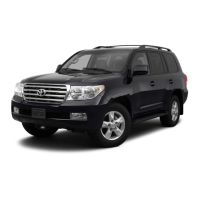
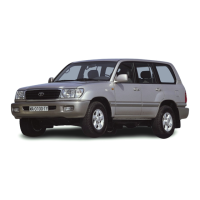
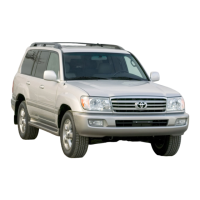
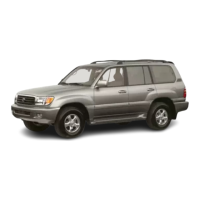
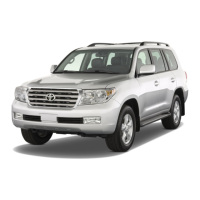
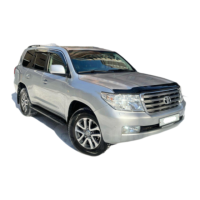
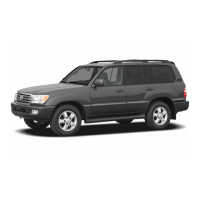
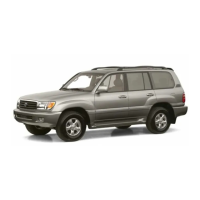
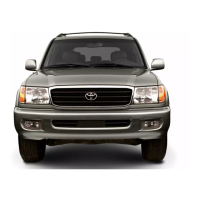
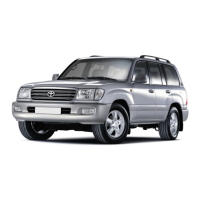
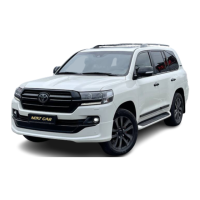
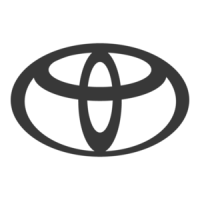
